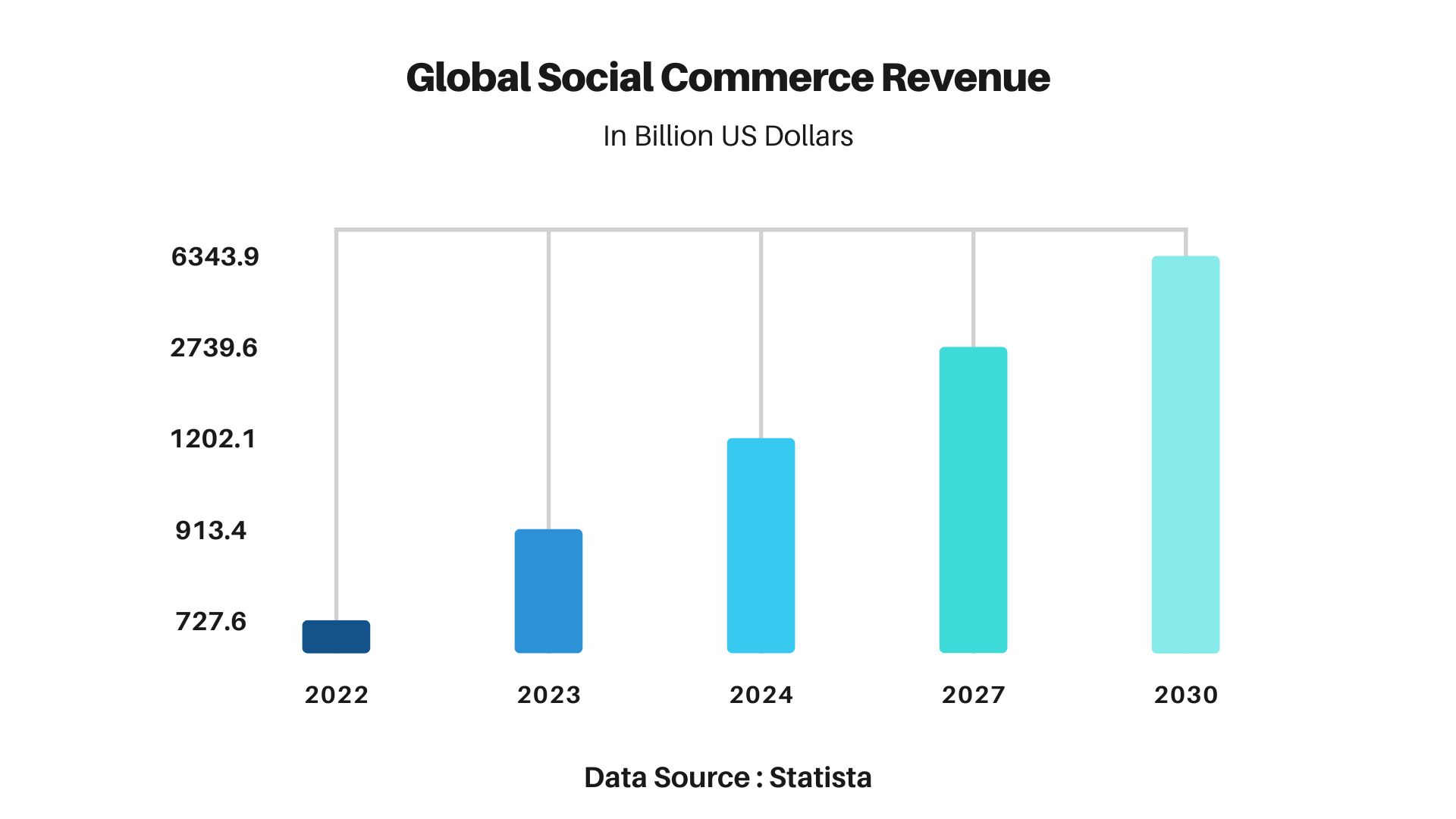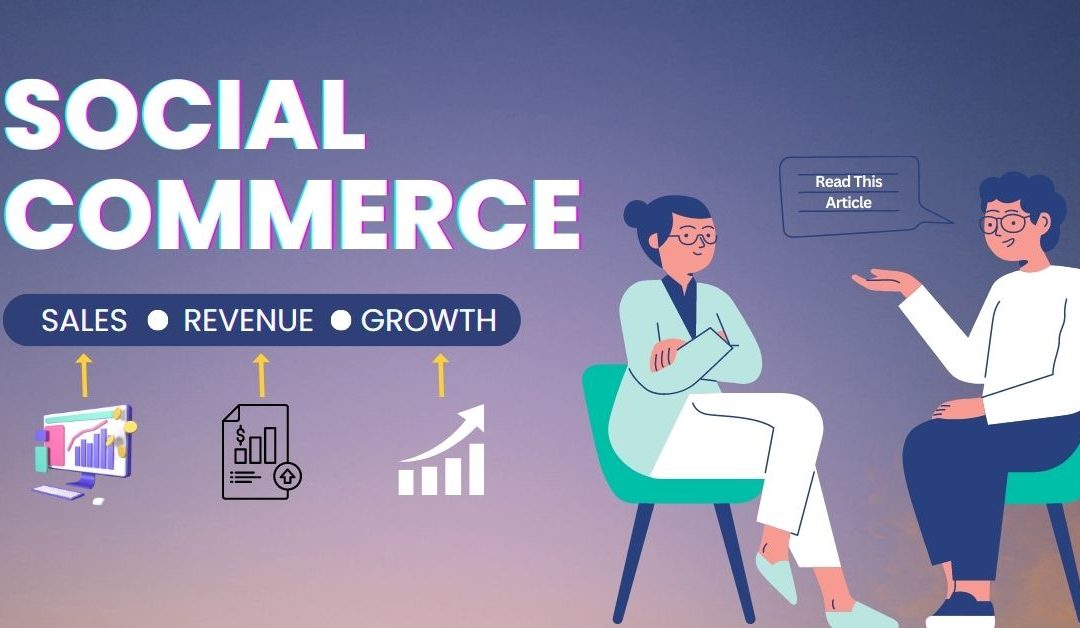TL;DR
Social commerce is a growing trend that enables businesses to sell products and services directly to customers on social media platforms. With global social commerce revenue valued at $728 billion in 2022, there is a huge opportunity for businesses to reach a wider audience and increase sales and revenue. The key social commerce platforms are Facebook, Instagram, Twitter, and TikTok, and successful businesses leverage social media by creating engaging content, partnering with influencers, and making it easy for customers to purchase products. To make the most of social commerce, businesses need to know their target audience, choose the right platforms, create engaging content, use influencers, and measure their results.
We have become accustomed to using social media on a daily basis. People use it to connect with others, share their experiences, and even shop through social media. With the rise of social commerce, businesses have a unique opportunity to reach a wider audience and increase sales and revenue.
In social commerce, products, and services are sold directly to customers on social media platforms. It’s a growing trend that has been made possible by the increasing number of people using social media and the rise of e-commerce.
Businesses are able to reach a wider audience through social commerce. Social media platforms like Facebook, Instagram, and Twitter have millions of active users, and companies can use these platforms to connect with potential customers and drive sales.
How Big is the Social Commerce Industry?
According to the research from Statista, the global social commerce revenue is valued at $728 billion in 2022 (source) and its expected to increase by 31.6% of the compound annual growth rate from 2023-2030. The whooping number of social commerce industries can shock anyone who is unidentical from the industry

The Arrival Of The Biggest Social Commerce Platform
Social commerce is on the rise after the arrival of big social media giants like Facebook, Instagram, Twitter, Tiktok, etc. The biggest social commerce platforms set the bar and make businesses easy to sell their products and services through the platform. I find it very interesting to know that how many people wanted to shop on these big social commerce sites. Check below;
Social Commerce Is Very Beneficial!
- Social commerce is a superficial thing in this era as sellers can sell their products directly to intent-based customers. Social media platforms provide better filtering options that leverage the possibilities of generating more leads and sales.
- Most likely, your product will only be shown to consumers who might be interested in it.
- Social commerce provides seamless integration between existing e-commerce platforms. It makes it easier to track their sales.
- Social media allow telling more about products. E.g. social media posts, stories, or even advertisements.
- Social media platforms allow businesses to quickly test and iterate on their marketing strategies, using data and feedback to refine their approach. This can lead to more effective campaigns and higher conversion rates over time.
Examples Of Businesses That Successfully Leveraged Social Media For Sales and Revenue Growth
- American Express uses social media platforms to sell its cards. American Express partnered with Influencers who already catered to a huge following. American Express started a campaign “#AmexAmbassadors” with influencers that show up fashionable people in beautiful places.
The crucial element is following the influencer’s original caption, which includes the #AmexAmbassadors hashtag and a reference to AmEx’s Instagram account. By associating the luxurious lifestyles of influencers with its brand, AmEx creates a connection between itself and opulence that may inspire individuals to consider applying for an Amex card.
- Nike crack the sale goal by reaching the demographics of the younger audience. The company runs its social media campaigns on Instagram and Snapchat. Nike’s ‘Just Do It’ is the most successful campaign, resulting in a 31% growth in online sales.
- In 2019, Warby Parker’s revenue reached $272 million, up from $95 million just two years earlier. The company has attributed much of this growth to its success in leveraging social media to build a strong brand identity and reach a wider audience.
So, how can businesses leverage social media for sales and revenue growth? Here are some tips:

1. Know Your Audience
To effectively leverage social media for sales and revenue growth, businesses need to know their target audience. On social media, what kind of content do they like and engage with? This knowledge will help businesses create content that resonates with their audience and drives engagement.
2. Choose the Right Platforms
Businesses can choose from a variety of social media platforms, but not every platform is right for them. Each platform has its unique features and audience, so it’s essential to choose the ones that align with your business goals and target audience.
3. Create Engaging Content
The content you share on social media is bombarded with users every day, so you need to create content that stands out and grabs their attention. This could include images, videos, polls, or interactive content.
4. Use Influencers
Influencers are social media users with a large following and a significant amount of influence over their audience. Partnering with influencers can help businesses reach a wider audience and drive sales.
5. Make it Easy to Purchase
The goal of social commerce is to make it easy for customers to purchase products or services directly from social media platforms. Businesses can use features like “Shop Now” buttons, “Buy” buttons, or links to their website to make the purchasing process seamless.
6. Measure Your Results
It’s essential to track your social media efforts to determine what’s working and what’s not. This will help businesses refine their strategy and optimize their social media presence for maximum sales and revenue growth.
Conclusion
In conclusion, social media commerce is no longer an optional marketing strategy for businesses that aim to drive more sales and revenue. With the help of social media commerce, businesses can widely reach their targeted audience. Businesses leverage social media to create engaging content, run targeted ad campaigns, and partner with influencers. The successful examples of business show the power of social commerce. As the world is evolving with the internet, social media commerce will be the best thing to grow your sales and revenues.
We provide result-driven social media management services that can unlock your potential to generate quality leads through social media platforms, that ultimately benefit you with increasing sales and revenue. Check out our social media management pricing packages to know more.
Sahil Thakur, a Digital Marketing Expert at Epiphany Infotech, specializes in On-page, Off-page SEO, and Amazon marketing & management. With a proven track record of boosting traffic and revenue for global websites, Sahil is passionate about all things digital marketing. Outside work, he stays updated on the latest trends in digital advertising.

